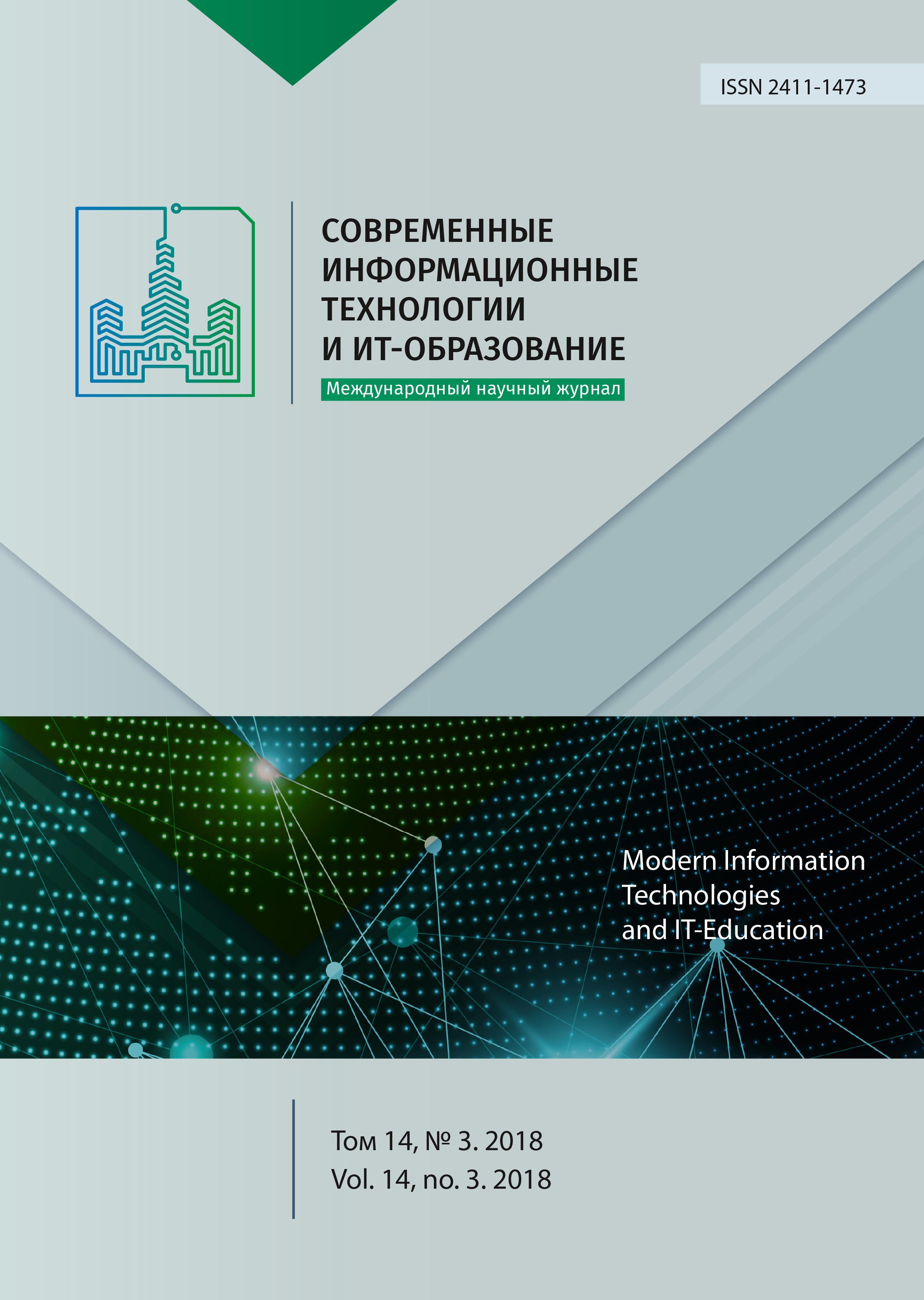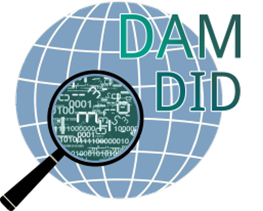ИНТЕЛЛЕКТУАЛЬНЫЙ АНАЛИЗ БОЛЬШИХ ПРОСТРАНСТВЕННО-ВРЕМЕННЫХ ДАННЫХ ДЛЯ СЛУЖБ ЭКСТРЕННОГО РЕАГИРОВАНИЯ
Аннотация
В последнее время аварийно-спасательные службы проявляют большой интерес к использованию геоинформационных систем (ГИС) для повышения эффективности мониторинга чрезвычайных событий и быстрого реагирования. Эффективность использования таких систем можно повысить путем применения в них методов интеллектуального анализа пространственно-временных данных с целью обеспечения поддержки принятия решений и извлечения потенциально полезных знаний, которые могли бы помочь эффективно обнаруживать чрезвычайные ситуации в режиме реального времени и предотвращать некоторые происшествия. Пространственно-временные данные играют большую роль в различных областях науки, таких как география, экология, здравоохранение, безопасность. На сегодняшний день рост населения и повышение уровня социальной активности имеет значительное воздействие на городскую среду и ведет к возникновению чрезвычайных ситуаций, таких как пожары, преступления, угрозы террористических актов, дорожно-транспортные происшествия. В связи с этим государственные органы нуждаются в новых решениях для эффективного реагирования и мониторинга чрезвычайных происшествий. Однако хранение и обработка больших объемов пространственно-временных данных на текущий момент все еще является серьезной проблемой, с которой сталкиваются службы, связанные с реагированием на чрезвычайные ситуации. В рамках данной работы был рассмотрены ряд подходов к анализу пространственных данных: анализ пространственных шаблонов, обнаружение пространственно-временных аномалий и анализ пространственной автокорреляции.
Литература
[2] Shekhar S., Zhang P., Huang Y., Vatsavai R.R. Trends in spatial data mining. H. Kargupta, A. Joshi, K. Sivakumar, Y. Yesha (Eds.) Data Mining: Next Generation Challenges and Future Directions. AAAI/MIT Press, 2004, pp. 357–380.
[3] Cressie N. Statistics for Spatial Data. Revised Edition. John Wiley & Sons, Inc., 1993. 900 p. DOI: 10.1002/9781119115151
[4] Agrawal R., Srikant R. Fast Algorithms for Mining Association Rules. Proceedings of the 20th VLDB Conference Santiago. Chile, 1994, pp. 487-499. Available at: http://www.vldb.org/conf/1994/P487.PDF (accessed 12.06.2018).
[5] Huang Y., Zhang P. On the Relationships between Clustering and Spatial Co-location Pattern Mining. Proceedings of the 18th IEEE International Conference on Tools with Artificial Intelligence (ICTAI'06). Arlington, VA, 2006, pp. 513-522. DOI: 10.1109/ICTAI.2006.91
[6] Ester M. Kriegel H-P., Sander J., Xu X. A Density-Based Algorithm for Discovering Clusters a density-based algorithm for discovering clusters in large spatial databases with noise. E. Simoudis, J. Han, U. Fayyad (Eds.) Proceedings of the Second International Conference on Knowledge Discovery and Data Mining (KDD'96). AAAI Press, 1996, pp. 226-231.
[7] Krishnamurthy R., Imielinski T. Practitioner problems in need of database research: Research directions in knowledge discovery. SIGMOD RECORD. 1991; 20(3):76-78.
[8] Adhikari R., Agrawal R.K. An Introductory Study on Time series Modeling and Forecasting. LAP Lambert Academic Publishing, 2013. 69 p. DOI: 10.13140/2.1.2771.8084
[9] Sak H., Senior A., Beaufays F. Long Short-Term Memory Recurrent Neural Network architectures for large scale acoustic modeling. arXiv:1402.1128v1. 2014. 5 pp.
[10] Li Y., Cao H. Prediction for Tourism Flow based on LSTM Neural Network. Procedia Computer Science. 2018; 129:277-283. DOI: 10.1016/j.procs.2018.03.076
[11] Getis A. A History of the Concept of Spatial Autocorrelation: A Geographer’s Perspective. Geographical Analysis. 2008; 40(3):297-309. DOI: 10.1111/j.1538-4632.2008.00727.x
[12] Yu J., Wu J., Sarwat M. GeoSpark: A cluster computing framework for processing large-scale spatial data. Proceedings of the 23rd SIGSPATIAL International Conference on Advances in Geographic Information Systems (SIGSPATIAL '15). ACM, New York, NY, USA, 2015. Article 70, 4 pp. DOI: 10.1145/2820783.2820860
[13] Keras library. Available at: https://keras.io (accessed 12.06.2018).
[14] Elephas: Distributed Deep Learning with Keras & Spark. Available at: https://github.com/maxpumperla/elephas#usage-of-data-parallel-models (accessed 12.06.2018).
[15] Garaeva A., Makhmutova F., Anikin I., Sattler K.-U. A framework for co-location patterns mining in big spatial data. Proceedings of the 20th IEEE International Conference on Soft Computing and Measurements (SCM 2017). St. Petersburg, 2017, pp. 477-480. DOI: 10.1109/SCM.2017.7970622

Это произведение доступно по лицензии Creative Commons «Attribution» («Атрибуция») 4.0 Всемирная.
Редакционная политика журнала основывается на традиционных этических принципах российской научной периодики и строится с учетом этических норм работы редакторов и издателей, закрепленных в Кодексе поведения и руководящих принципах наилучшей практики для редактора журнала (Code of Conduct and Best Practice Guidelines for Journal Editors) и Кодексе поведения для издателя журнала (Code of Conduct for Journal Publishers), разработанных Комитетом по публикационной этике - Committee on Publication Ethics (COPE). В процессе издательской деятельности редколлегия журнала руководствуется международными правилами охраны авторского права, нормами действующего законодательства РФ, международными издательскими стандартами и обязательной ссылке на первоисточник.
Журнал позволяет авторам сохранять авторское право без ограничений. Журнал позволяет авторам сохранить права на публикацию без ограничений.
Издательская политика в области авторского права и архивирования определяются «зеленым цветом» в базе данных SHERPA/RoMEO.
Все статьи распространяются на условиях лицензии Creative Commons «Attribution» («Атрибуция») 4.0 Всемирная, которая позволяет другим использовать, распространять, дополнять эту работу с обязательной ссылкой на оригинальную работу и публикацию в этом журналe.













